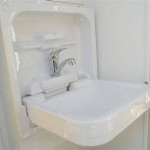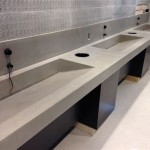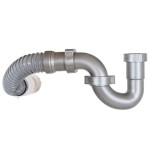Why Does My Bathroom Faucet Leak At The Base?
A leaking bathroom faucet can be a frustrating and wasteful problem. While a drip every few seconds might seem insignificant, over time, it can lead to substantial water waste and potential damage to your bathroom. One common type of leak occurs at the base of the faucet, where it connects to the sink. Understanding the cause of this leak can help you effectively address it.
Worn-Out Washers
Perhaps the most common culprit behind a base leak is a worn-out washer. Washers are small rubber or plastic components that sit within the faucet stem. When you turn the faucet on, the washer creates a tight seal that prevents water from escaping. Over time, the washer can wear down due to repeated use, heat, and exposure to water. This wear and tear can cause the washer to lose its ability to create a proper seal, resulting in a leak at the base of the faucet.
The type of washer used depends on the faucet model and its age. Older faucets often utilize rubber washers, while newer models often use ceramic discs. Regardless of the type, if the washer has become worn or damaged, it will need to be replaced to fix the leak.
Loose or Damaged O-Rings
O-rings are small, circular rubber seals also found within the faucet stem. They help create a watertight fit between the faucet's components. If an O-ring becomes loose or damaged, it can allow water to escape from the base of the faucet. Like washers, repeated use and exposure to water can cause O-rings to deteriorate over time.
A loose O-ring can often be tightened by hand using a wrench, although in some cases, a new O-ring may be required. Damaged O-rings need to be replaced. It's important to note that O-rings are usually made of a specific material, and using the incorrect type can lead to further problems.
Corrosion or Mineral Buildup
Over time, corrosion and mineral buildup can occur within the faucet's internal parts. Water containing dissolved minerals can leave behind deposits, leading to a buildup of scale or rust. These deposits can obstruct the flow of water and cause leaks at the base of the faucet.
Corrosion or mineral buildup can often be tackled by cleaning the faucet's internal parts with a specialized cleaning solution. However, in severe cases, it may be necessary to replace the faucet altogether. Regular maintenance, such as cleaning the faucet with vinegar, can help prevent mineral buildup and prolong the life of your faucet.
Loose Fittings
The base of the faucet is typically connected to the sink using a series of fittings. These fittings hold the faucet in place and prevent water from leaking. If these fittings become loose due to vibrations or improper installation, they can cause leaks at the base of the faucet. Loose fittings can be tightened using a wrench, but ensure you do not overtighten as this can damage the fittings.
It's important to note that, while a base leak might appear to originate from the base, the actual cause could be a problem within the faucet stem. Therefore, it's often necessary to disassemble the faucet to diagnose the specific problem and make the appropriate repairs.

Sealing A Leaky Faucet Base Plate Fix It Fast In 4 Steps Or Less

How To Fix A Bathroom Faucet 14 Steps

How To Fix A Bathroom Faucet 14 Steps

Faucet Leaking At Base Of Spout Irv2 Forums

Gooseneck Faucet Leaking Around Base Easy Fix

Bathroom Faucet Leaks At Base When Turned On How To Fix It Mr Kitchen Faucets

How To Fix A Leaky Faucet True Value

How To Fix A Leaky Showerhead Bathroom Faucet And More

How To Fix A Bathroom Faucet 14 Steps

How To Fix Pipework A Tap Faucet Leaking Under The Sink
Related Posts







